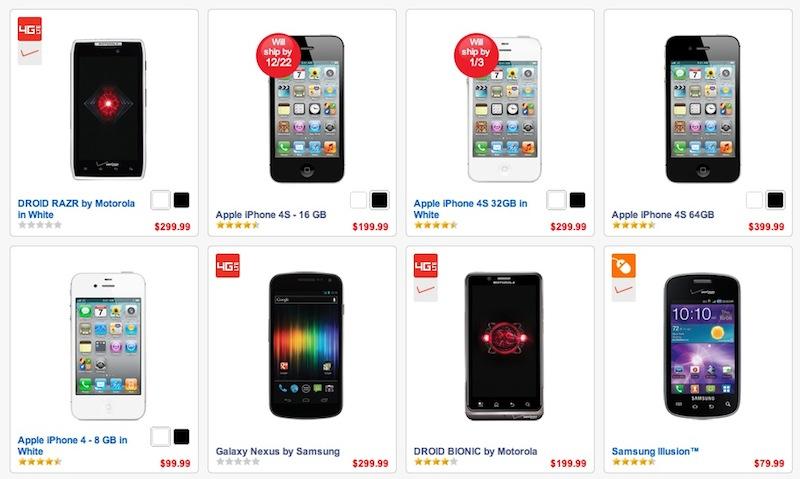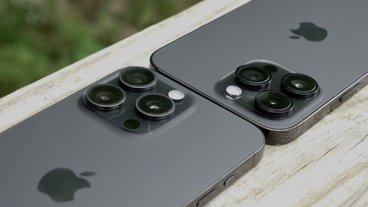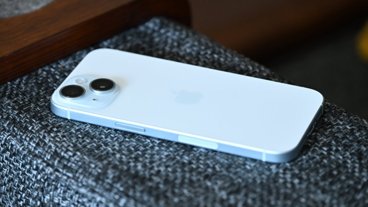Verizon soaking high end Android buyers to make up for iPhone subsidies
The result is a price disparity that favors the various iPhone models by $100 to $200 over Android devices with a similar hardware cost. That's helping Apple keep its margins up even in a market glutted with competition from scores of Android models from various makers.
It also leaves carriers and other hardware makers fighting over the scraps of profit left, as most Android buyers aim toward cheap, low end models. Carriers like Verizon know that buyers interested in high end Android phones will pay virtually anything, so they're marking those models up to be half again as much as Apple's new iPhone 4S.
Android costs more, not less
When Google first began touting Android as an open source platform, pundits predicted that the wide variety of Android licensees would offer cheaper phones with differentiated, innovative features that Apple simply couldn't compete with. Instead, Apple has consistently offered more attractive hardware at the same or lower prices, in part by negotiating higher subsidies in exchange for access to the iPhone.
For years, Apple has set a standard entry price of its newest smartphones at $199, with higher end models available with more storage. This year however, Verizon has set a new contract price for its high end Android phones at $299.
Both the Motorola Droid RAZR and the just released Google-branded Samsung Galaxy Nexus are $299 with a two year Verizon contract, and both are listed as costing $649 without a contract. In contrast, Apple's 16GB iPhone 4S is offered for only $199, even though it costs the same $649 without a contact. Apple is getting a $450 subsidy, compared to just $350 for Android licensees Motorola and Samsung.
Apple's $450 subsidy remains the same across the iPhone 4S range of 32 and 64GB models. The 8GB, $99 Verizon iPhone 4 has a full retail price of $549, also giving it the same $450 subsidy.
This has the effect of making the base model iPhones appear cheaper, and the higher end iPhones with increased storage appear to be about the same price as the base model, high end Android offerings.
Higher priced, lower end Android models
Verizon's $199 Android phones, including the Samsung Droid Charge, Motorola Droid 3 and Droid Bionic, cost $499, $459 and $589 respectively without a contract, making their subsidies worth just $300 to $390, or $150 to $60 lower than Apple's.
The closest Verizon's phones currently come to an iPhone subsidy appears to be the HTC Thunderbolt, which is being offered for $149, a $420 subsidy compared to its $569 full retail price. However, this involves a special promotional discount of $100, making the "sale" price of Android models still higher than regular price of any of Verizon's iPhones.
Discounted older Android models, such as the $79 Samsung Illusion, $99 Samsung Stratosphere and $149 HTC Droid Incredible 2 are listed with a full retail price of $329, $409 and $439 respectively, giving them a subsidy of between $250 and $310, or $140 to $200 less than Apple's "low end" 8GB iPhone 4, despite their being roughly six to nine months newer than than the original iPhone 4 (albeit saddled with a 2.3 version of Android that is now a year old and lacking upgrade potential; the iPhone 4 runs Apple's latest iOS 5).
Android is subsidizing Apple subsidies at Verizon
In 2010, the "year of Android" at Verizon, the carrier bet on Android as an alternative to Apple's iPhone. Toward the end of the year, it found that it could not attract and retain subscribers as well as AT&T could with the iPhone, and subsequently agreed to carry Apple's iPhone 4. In order to gain access to the iPhone, Verizon had to pay Apple a premium in subsidies.
Rather than pitting cheaper Android models against the iPhone, Verizon has marketed both in parallel; it simply charges more for Android, apparently in an effort to make up for the short term expense of iPhone subsidies.
Additionally, unlike new iPhone models that appear every year, Android licensees pop out new models every three to six months. This has created an upgrade cycle that forces down prices, something that is not in carrier's interests. Because high end Android buyers seem to be price insensitive, Verizon can charge them significantly more to get the latest model at the $299 tier, then trickle down updates to the once standard $199 tier, rather than glutting their offerings with a large number of hard to differentiate models all priced below $100.
The end result is that Apple has an attractive enough product to demand a higher subsidy from Verizon and other carriers, starting the iPhone 4 and 4S at $99 and $199, a significant discount buyers will recognize, unless the are set on buying the latest Android phone to appear on the market. The lower subsidies that Verizon can get away with offering to Android buyers essentially helps it to offer iPhones for less.
Somewhat ironically, this means that Google's Android is assisting Apple's hardware business in a way that's similar to how Microsoft makes more money licensing its IP to Android makers rather than selling its own Windows Phone 7 platform to them, or in the respect that some Verizon Android phones are shipping with Microsoft Bing as their default search service rather than Google's own.
While Android is consistently being positioned as a threat to Apple in comparison to Microsoft's Windows from the 1990s, Google's efforts to push Android are actually funneling an additional $100 or more from each devoted Android consumer to ensure that carriers such as Verizon can offer iPhones for less by paying Apple a significantly higher upfront subsidy per phone. Microsoft Windows never similarly benefited Apple's Macintosh platform.
 Daniel Eran Dilger
Daniel Eran Dilger











 Marko Zivkovic
Marko Zivkovic
 Amber Neely
Amber Neely
 Christine McKee
Christine McKee
 Malcolm Owen
Malcolm Owen
 Mike Wuerthele and Malcolm Owen
Mike Wuerthele and Malcolm Owen

 William Gallagher
William Gallagher








